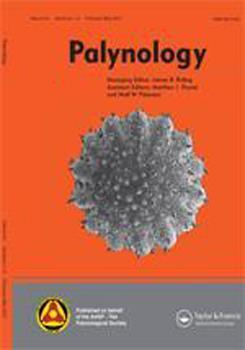The objective of the present study was to characterise the pollen morphology of the African genera Paropsia and Barteria (Passifloraceae sensu stricto, tribe Paropsieae), with the aim of identifying characters diagnostic of the genera. The pollen grains of nine species (two of Barteria and seven of Paropsia) were acetolysed, measured, described and illustrated using light and scanning electron microscopy. The pollen grains of Barteria are apolar with five pores, while those of Paropsia are isopolar and six-colporate with six endoapertures, one endoaperture for each ectoaperture. The endoapertures of Paropsia vary among the species and can be lolongate, lalongate or circular. The ornamentation of the sexine of Barteria is echinate-granulate, which proved important for distinguishing this genus from Paropsia, which has a reticulate sexine. Multivariate analysis based on quantitative data revealed two groups: Cluster 1, formed by species of Barteria; and Cluster 2, formed by species of Paropsia. The present work found the studied genera to be closely associated with Passiflora, the most well-known genus of Passifloraceae sensu stricto. Paropsia and Passiflora subg. Astrophea are closely related phylogenetically, as supported by their palynological affinity observed in the present study. However, the two taxa do differ in the arrangement of their apertures, with Paropsia having six ectoapertures and six endoapertures while species of Passiflora subg. Astrophea have six ectoapertures and three endoapertures. Because Passiflora subg. Astrophea is more derived, it is hypothesised that it experienced fusion of endoapertures during its evolutionary history. The results reported here are significant to the initial understanding of the evolution of pollen grains in Passifloraceae sensu stricto.
How to translate text using browser tools
8 July 2019
Pollen Morphology of Barteria and Paropsia: Implications for the Systematics of Passifloraceae Sensu stricto
Ana Carolina Mezzonato-Pires,
Hian Carlos Ferreira de Sousa,
Cláudia Barbieri Ferreira Mendonça,
Vania Gonçalves-Esteves
ACCESS THE FULL ARTICLE
It is not available for individual sale.
This article is only available to subscribers.
It is not available for individual sale.
It is not available for individual sale.

Palynology
Vol. 43 • No. 3
July 2019
Vol. 43 • No. 3
July 2019
Barteria
multivariate analysis
Paropsia
Passifloraceae sensu stricto
systematics




